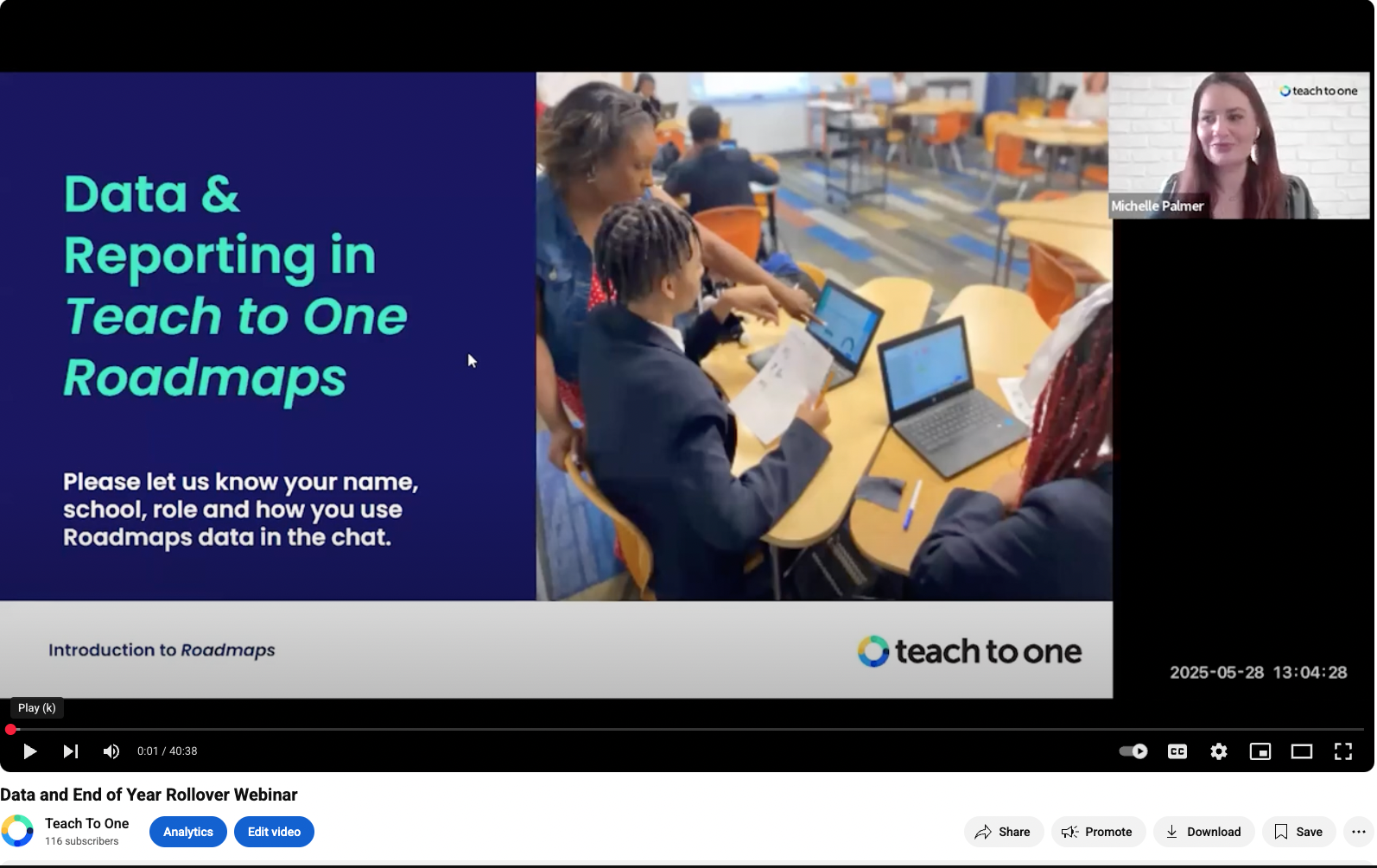Five key questions to ask any vendor selling math edtech to your schools
April 27, 2022
By Teach to One

Education technology to help teachers and students with math is developing in leaps and bounds. There are many companies that now offer a wide variety of virtual tools aimed to assist students in learning and practicing critical math concepts. But the quality and suitability of these different tools and systems can vary enormously. One that might suit the educational needs of one school district might be a poor fit for another district. Here are five questions we suggest asking any potential math ed-tech supplier to help ensure your teachers and students end up with the best educational technology for them.
#1. Will the content engage the students and teachers, and keep them engaged?
The link between worker engagement and job performance is well-established. Similarly, new research is strongly suggesting that higher student engagement with learning material drives better learning outcomes.
Research published in the International Journal of Education Technology in Higher Education shows student engagement is correlated with improved achievement, persistence and knowledge retention, while disengagement has a profound effect on student learning outcomes and cognitive development.
Edtech can counter this (in ways traditional teaching methods find difficult) by supporting the teacher’s ability to offer personalized, differentiated learning to each student and promote active learning — regardless of the range of learning levels in their class.
An edtech math solution that’s able to identify a student’s specific learning level (and even the specific skill or concept) and present specifically tailored content will be more consistently challenging, interesting and engaging for students and teachers.
These individual, differentiated learning experiences — because they can be can be more personal, supportive and interactive — are more capable of being engaging and rewarding and students are more likely to be invested in the learning journey.
#2. Can the tech be used both in school and at home?
A lot of Edtech solutions are focused solely on supporting in-school activity, or are designed for home settings. Few are truly capable of both.
Edtech solutions that lack the ability for math to be effectively taught both in schools and at home will leave the students (and education leaders) that use them at a disadvantage in coming years.
The best — and most useful — edtech has the inbuilt versatility to be used in either setting.
When evaluating a digital solution, look for opportunities to use the tool in a variety of scenarios. A tool that can address supplemental classroom instruction, homework, tutoring, after-school programs, coverage for substitute teachers, and more, will deliver tremendous value. Your budget and your internal product onboarding team will thank you.
#3. Can this program be used for multiple grade levels?
Scalability isn’t just a feature in edtech, it’s the key to its utility.
Any product — especially being used districtwide— must have scalability, expandability and flexibility at its heart. Even if you begin with a small, focused pilot program, to deliver real value it must be capable of expanding across entire schools and handling many users. Can it handle the full traffic of your district? If not, its ultimate value is dubious.
Furthermore, edtech’s mission in math needs to be broad.
Many students are arriving at middle school with unfinished math learning from prior years. This is a disaster for them because math is cumulative. But current education policies focus exclusively on grade-level material — and so does a lot of edtech. This makes it impossible for teachers to simultaneously address each student’s unfinished math learning from previous years and successfully teach the current grade curriculum.
If the tool you’re evaluating can’t span multiple grade levels of learning, it will never help teachers understand exactly where a student stands in their math learning journey, and then provide guidance and resources to accelerate their learning.
#4. Is the vendor adding innovative thinking to your schools?
The bottom-line is that you should never select a product if it can’t innovate and develop to match your own evolving needs. Ed-tech is already playing an important role in bridging learning gaps and creating a better, smoother learning experience for students.
The technology tool you’re considering must not only help students think and learn more deeply now, but be able to do so in the future.
And since edtech is evolving rapidly, you need to be sure you’re partnering with a thought-leader capable of keeping their products at the leading-edge of pedagogy, so your devices or tools won’t become dated — and your investment wasted.
#5. How will we measure success?
Ultimately, you want to see results for your district. Happier students with higher levels of engagement and reduced learning gaps, and more effective teachers who don’t feel under constant stress.
So, ask any edtech solution you’re evaluating about the results districts and schools implementing their product are seeing. What stories can they share from the field, and how do those testimonials align with your district’s goals?
Latest Posts

Recording: Data and End of Year Rollover Webinar
In this 45-minute webinar recording, Michelle Palmer, Senior Director of Customer Success, and Liat Greenspan, Associate Director of Program Success, explain how to assign a skill or pathway, use the Teacher Dashboard to identify struggling students, leverage the Reports Hub for weekly planning, and monitor growth and engagement on the Progress Page.

Getting Students Engaged in Math at Valley Charter
Students arrive at their assigned seats equipped with laptops and individualized Teach to One Roadmaps packets, which include a work time poster, a note-taking sheet, and graph paper.

Webinar Recording: Unlocking Algebra
On Tuesday, May 13, TNTP and New Classrooms released the report: Unlocking Algebra – What the Data Tells Us About Helping Students Catch Up. On the same day Adam Meier, Partner, Research Center of Excellence, TNTP, and Joel Rose, Co-founder and Chief Executive Officer, New Classrooms, presented the findings, recorded in the webinar below. Looking […]